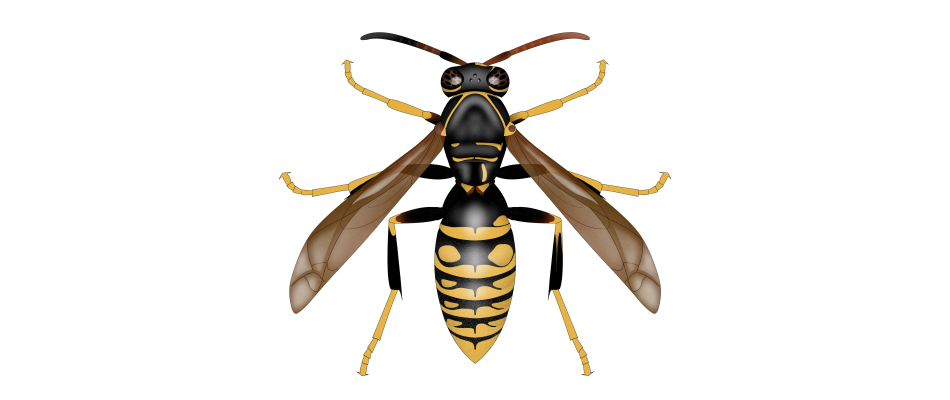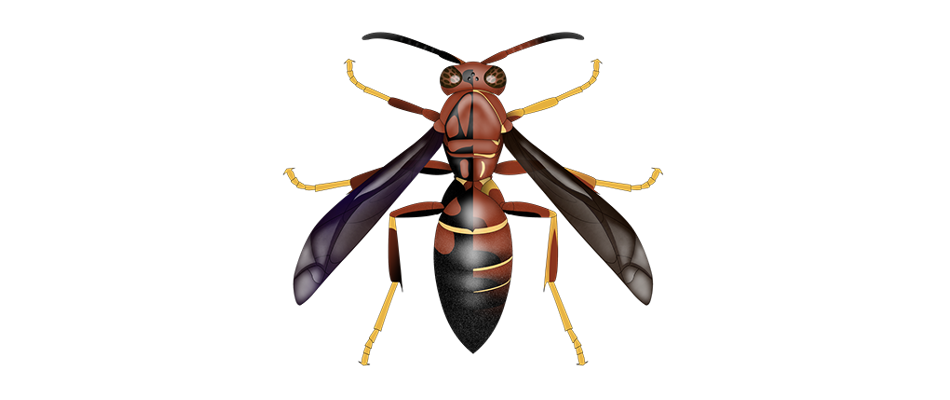Understanding Hypervariable Polistes: A NEW CITIZEN SCIENCE INITIATIVE
EDIT: A new project update is available here.
Hello all!
As many of you know, I am currently working on the second edition of my field guide to social wasps. I want to make all of the information it contains as accurate as possible, so I am delving back through iNaturalist data to better understand the biogeography of various color forms of the most hypervariable Polistes species in North America: fuscatus, aurifer, and dorsalis.
To that end, I've created 22 individual iNaturalist projects to sort observations of each color form. I would LOVE to have additional help with this research, so if anyone is interested in sorting iNat observations, all of the relevant links are below. The results of this initiative will be tremendously helpful to my own research (and likely helpful to other Vespid researchers as well!). Please feel free to share this with your friends!
Click here to view all observations of Polistes fuscatus that have not been identified to color form.
Click here to view all observations of Polistes aurifer that have not been identified to color form.
Click here to view all observations of Polistes dorsalis that have not been identified to color form (or to subspecies, in the case of P. d. dorsalis).
Explanation of Color Forms (and links to projects):
FORM DEFINITIONS MAY CHANGE AS THE INITIATIVE PROGRESSES.

Polistes aurifer - "Gilded" Form
- Thick yellow lines or splotches on the scutum (or yellow lines that connect in the middle)
- Yellow spots on T2 are not clearly separated from the margin (except by the hairline-thin width of the fascia)

Polistes dorsalis californicus - "Gilded" Form
- Propodeum more yellow than red
- Large yellow spots on T2 (large compared to most dorsalis)

Polistes aurifer - "Central" Form
- Scutum is more red than black
- Yellow lines on the scutum are either very thin or absent
- Yellow spots on T2 are not clearly separated from the margin (except by the hairline-thin width of the fascia)
- Scutum is more red than black
- Yellow spots on T2 are clearly separated from the margin

Polistes aurifer - "Baja California" Form
- Red scutum
- Yellow spots on T2 are clearly separated from the margin (or absent)
- Yellow spots on T4-5 are not clearly separated from the margin (except by the hairline-thin width of the fascia)

Polistes dorsalis neotropicus - "Ember" Form
- Propodeum and metanotum are more black than red or yellow

Polistes dorsalis neotropicus - "Central American" Form
- Scutum is more red than black
- Propodeum is mostly yellow
- No yellow margin on T5

Polistes dorsalis neotropicus - "Texas" Form
- Propodeum and metanotum are more red or yellow than black
- Clypeus is more yellow than red in females (compare with Polistes dorsalis dorsalis, whose clypeus is mostly red)
- Yellow margin on T5

Polistes dorsalis californicus - "Valley" Form
- Scutum is more red than black
- Small yellow spots on T2 (compared with the "Sonoran" and "Charred" color forms)

Polistes dorsalis californicus - "Sonoran" Form
- Scutum is more red than black
- Large yellow spots on T2 (large compared to most dorsalis)

Polistes dorsalis californicus - "Charred" Form
- Scutum is more black than red
- Large yellow spots on T2 (large compared to most dorsalis)

Polistes aurifer - "Chihuahuan" Form
- Scutum is more black than red
- Pronotum and scutellum are more red than black
- Yellow spots on T2 are not clearly separated from the margin (except by the hairline-thin width of the fascia)
- Black scutum
- More black than red on the pronotum and scutellum
- Yellow spots on T2 are not clearly separated from the margin (except by the hairline-thin width of the fascia)

Polistes aurifer - "Northern" Form
- Black scutum
- More black than red on the pronotum and scutellum
- Yellow spots on T2 are clearly separated from the margin

Polistes aurifer - "Painted" Form
- Scutum is more black than red
- More red than black on the pronotum and/or the scutellum
- Yellow spots on T2 are clearly separated from the margin

Polistes fuscatus - "Prairie" Form
- Yellow spots on T2-4

Polistes fuscatus - "Yellow-Spot" Form
- Yellow spots on T2
- No yellow spots on T3-4

Polistes fuscatus - "Decorated" Form
- More red than black on T1-6
- No yellow spots on the gaster
- Pale or yellow margins on T1-6

Polistes fuscatus - "Quilted" Form
- No yellow spots on the gaster
- More black than red on the scutum and T1
- Red markings on T2

Polistes fuscatus - "Northern" Form
- No red on the scutum or gaster
- Pale or yellow margin on at least T1-3

Polistes fuscatus - "Coal" Form
- No red on the scutum or gaster
- No pale or yellow margin on T3-6

Polistes fuscatus - "Bleeded-Heart" Form
- More red than black on the scutum and T1
- No pale or yellow margin on T4-6
Tagging people who may be interested in participating in this initiative:
@aliandbrice @darlingbeetle @jonathan142 @susanna_h @bdagley @benjamin189 @jfmantis @cbelle1 @coolcrittersyt @texaskingbird @thevioletwasp @angelpeach @ineeley @allisonbf @barthelemy @phm8871 @villu @juan_sphex
Tagging people who may be interested in the results of this initiative:
@matthias22 @pedro3111
Thank you all!
Alie






